
Kissproof lipstick advertisement from Woman's Life magazine, October 27th 1928.
You could buy a Kissproof lipstick in a "rich, red, youthful colouring" that is not only waterproof but requires only one application in the morning because it is "as permanent as the day is long."
Now that is quite some claim to make, because I'm sure that right at this moment there are boffins in the labs of L'Oreal still busily trying to formulate a lasting lip colour to live up to that kind of claim. Perhaps the Kissproof formula included a pigment that actually stained the lips?
According to Wikipedia that was indeed the case: "long-lasting, indelible stains were the most popular" in the 1920s.
So if this lipstick (lip dye?) required only one application a day, presumably you wouldn't need much of it. In fact, the lipsticks were tiny:
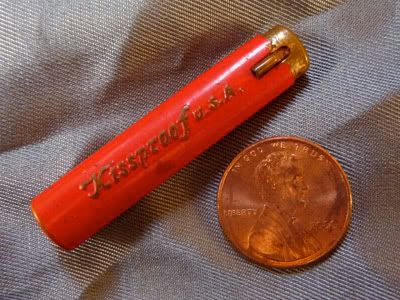 Kissproof lipstick, with a cent for scale (apologies to UK viewers, the cent appears to be the universal indicator of scale - it is slightly smaller than a penny).
Kissproof lipstick, with a cent for scale (apologies to UK viewers, the cent appears to be the universal indicator of scale - it is slightly smaller than a penny).
 Kissproof lipstick, with a cent for scale (apologies to UK viewers, the cent appears to be the universal indicator of scale - it is slightly smaller than a penny).
Kissproof lipstick, with a cent for scale (apologies to UK viewers, the cent appears to be the universal indicator of scale - it is slightly smaller than a penny). This example measures just under 1¾ inches (4.2 cm) long and just over ¼ inch (9 mm) wide. I can't remember how I acquired this lipstick, but I suspect it was from the days when my mother ran a vintage clothes shop and would sometimes find things (shopping lists, hair grips, handkerchiefs, no diamond rings unfortunately) in the old handbags she sold.
Its not cylindrical as you might expect, but a kind of flattened, oval shape, and it has been used right up to the nub (it was a matte, dark red colour, incidentally).
Another popular lipstick brand was Tattoo:
This has the typical cylindrical shape, but is only 1 inch (2.5 cm) in length. It is etched with dancing maidens dressed only in skimpy grass skirts.
Compared to modern lipsticks, these are absolutely tiny, and must have been a boon in the days when handbags were correspondingly petite.
Just to return to the Kissproof ad at the top for a moment: it strikes me as a rather strange advertisement for a cosmetic product. Its very brisk and English, with two posh, outdoorsy women ("My dear") conversing on horseback. This is not the kind of scenario you might associate with a lipstick - I'd imagine a night club, or fancy restaurant, or one of those newfangled cocktail bars that came over from America during the 1920s. Where's the glamour, or the sex appeal?
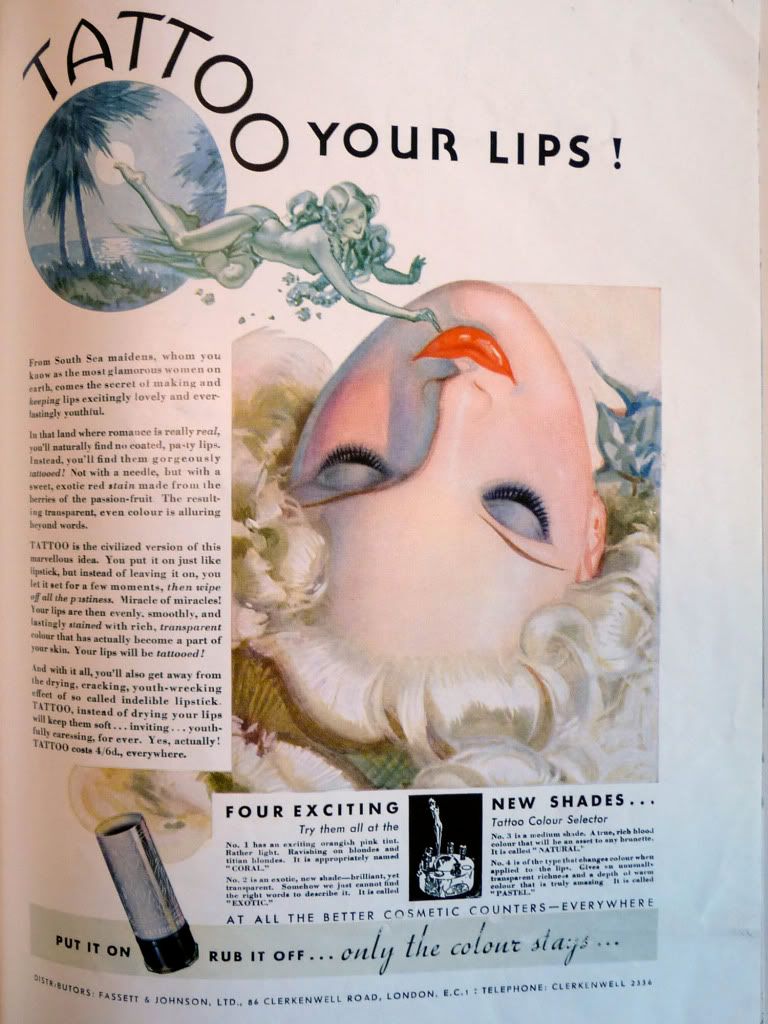
Well, the Tattoo lipstick company knew all about sex appeal, and in a series of advertisements from the 1930s they laid on the glamour and exotic sex appeal with a trowel:

Vogue, 7th August 1935, full page ad on the back cover.
"From South Sea maidens, whom you know as the most glamorous women on earth, comes the secret of making and keeping lips excitingly lovely and everlastingly youthful.
In that land where romance is really real, you'll naturally find no coated, pasty lips. Instead, you'll find them gorgeously tattooed! Not with a needle, but with a sweet, exotic red stain made from the berries of the passion-fruit. The resulting transparent, even colour is alluring beyond words."
Now that's more like it! "Really real" romance! And there's even a glimpse of bosom!
The recumbent female figure with the dewy lips was a signature feature of many of these Tattoo ads:
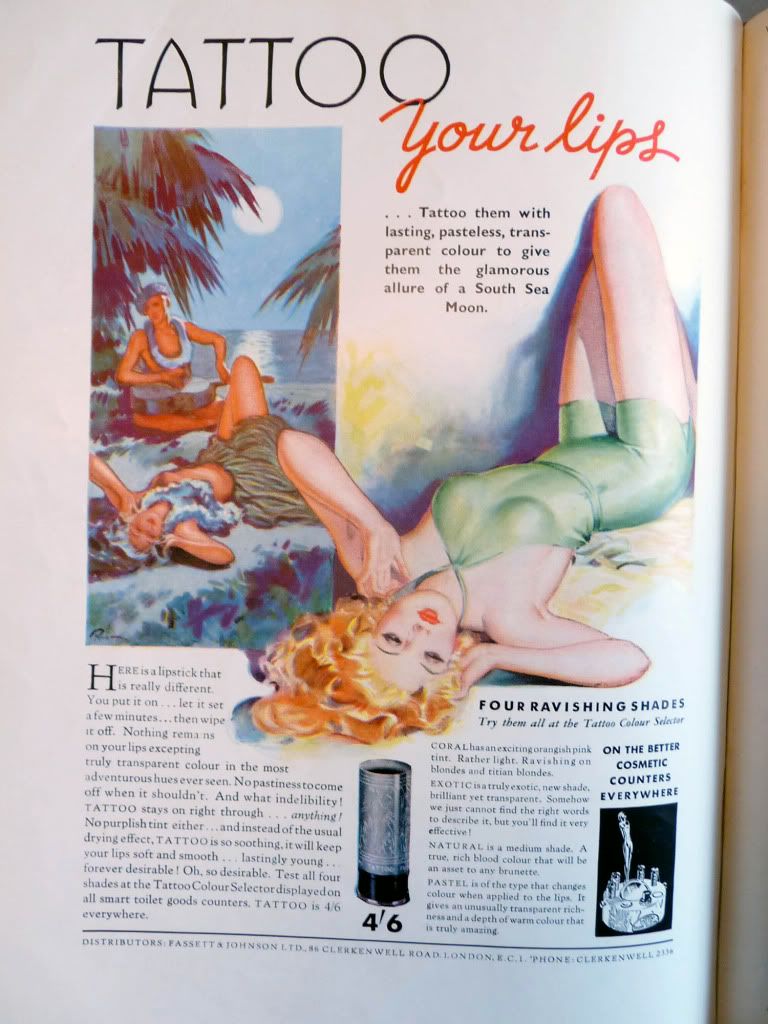

Vogue, 21st August 1935, full page ad inside the back cover.
Here, a modern, swimsuit-clad young lady precisely echoes the posture of her South Sea island sister, who is so transported by the dreamy guitar melodies that she's writhing on the ground!
"TATTOO is so soothing, it will keep your lips soft and smooth . . . lastingly young . . . forever desirable! Oh, so desirable."
Phew! I think we're getting the message. I'll bet these overheated, sensual ads found a receptive audience beyond their intended market.
Incidentally, they've also dropped the claim that these lipsticks are made "from the berries of the passion-fruit" which I'm sure was completely untrue, not to mention faintly ridiculous, and was probably only added because it had the word 'passion' in it. EDIT: I've re-read the copy and its clear I misunderstood it - those South Sea maidens were supposedly 'tattooing' their lips with passion-fruit - it was not claimed to be an ingredient of the lipstick. I'm not convinced that you would get much colour from a passion-fruit so the idea is still preposterous!
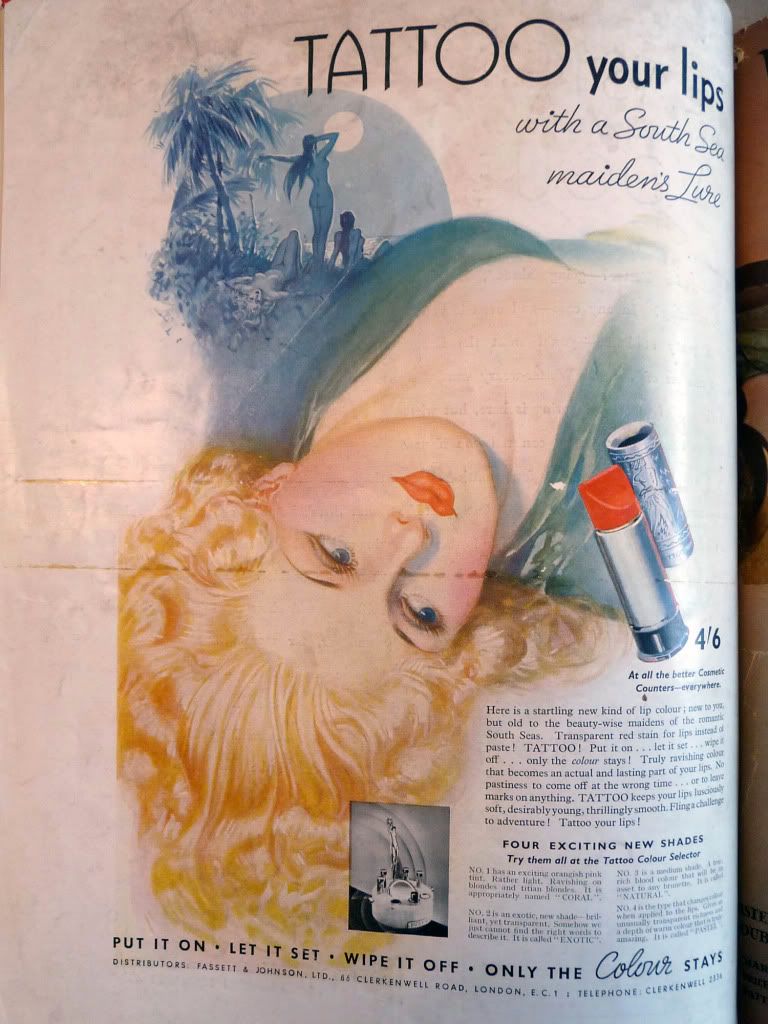
Vogue, 4th March 1936, full page ad on the back cover.
They must have liked that swooning posture, because you can see one of the women at the top of this ad in more or less the same position, not to mention being naked and with two other naked women.
"Fling a challenge to adventure! Tattoo yours lips!"
And what kind of adventure might that be, hmmm?
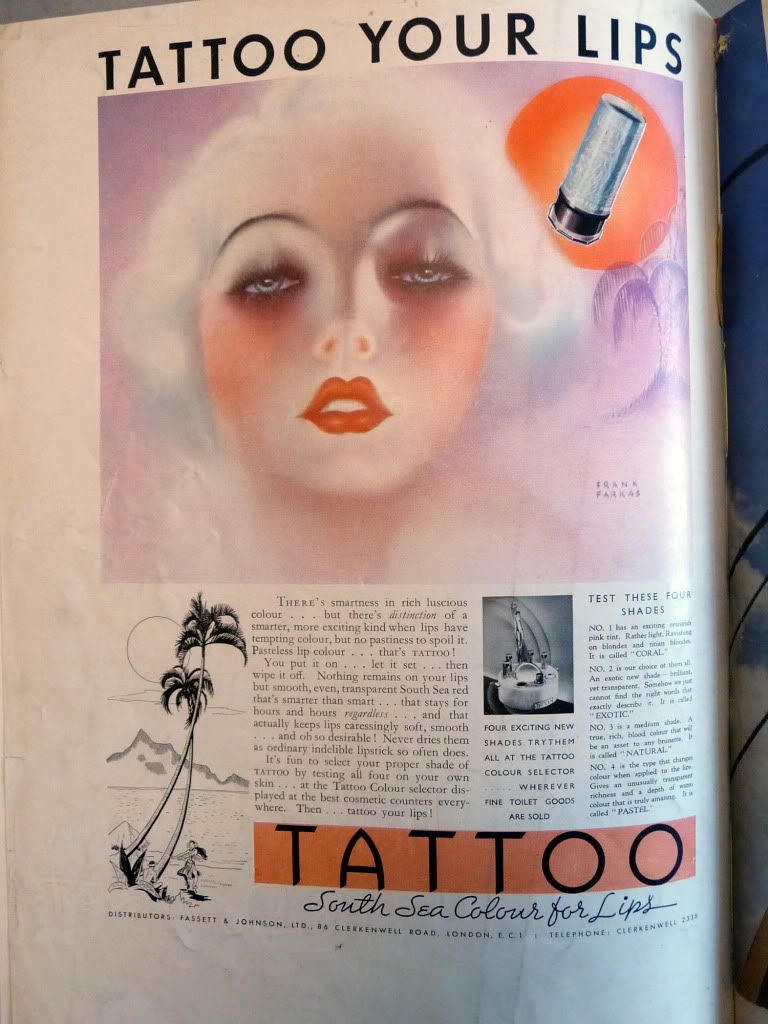
Vogue, 15th April 1936, full page ad on the back cover.
South Sea exoticism is relegated to the bottom left corner in this 1936 ad, which features an ethereal Jean Harlow type, the right way up for a change. (This illustration is signed by Frank Farkas, about whom I've failed to find out much except that he trained in Europe and worked in an ad agency called Farkas-Jensen-Farkas in Chicago).
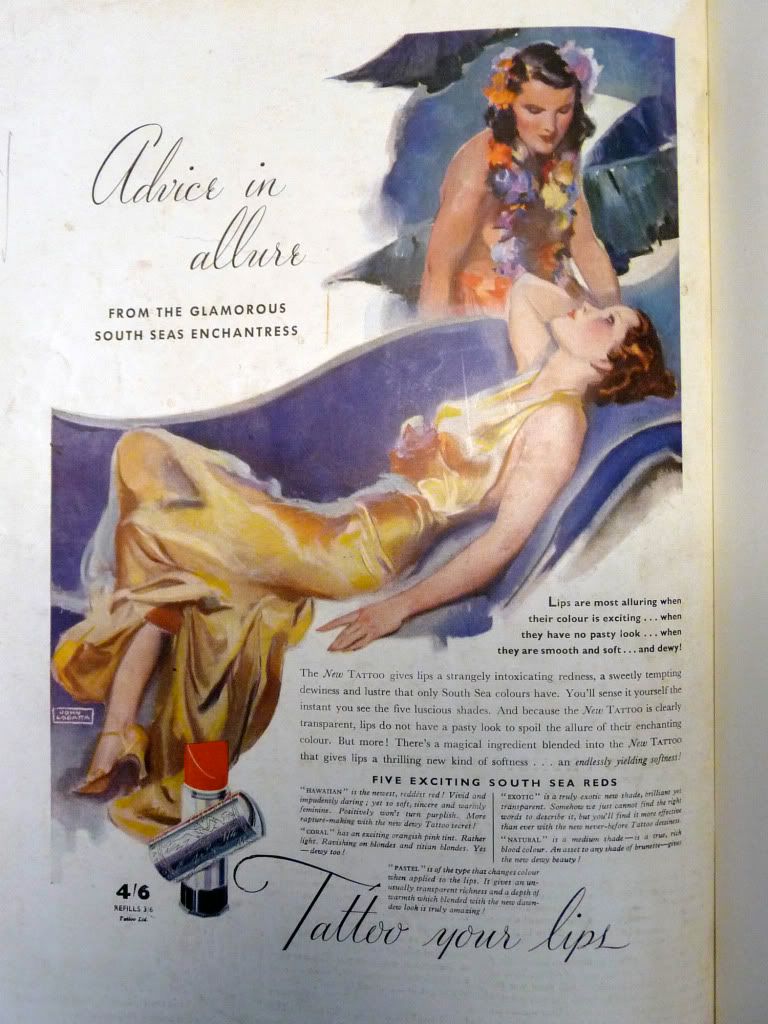

Vogue, 7th July 1937, full page ad on the back cover.
This last Tattoo ad, illustrated by John LaGatta has a "South Seas Enchantress" whispering secrets to a languid chestnut brunette in a gloriously liquid satin gown. Its perhaps a little more restrained (if you ignore the hint of lesbian eroticism, that is), although the copy is anything but:
"There's a magical ingredient blended into the New TATTOO that gives lips a thrilling new kind of softness . . . an endlessly yielding softness!"
Well, really. I can feel my inner brisk Englishwoman losing patience now. That's quite enough of that!
[Note: the Tattoo advertisements were found in bound copies of British Vogue, held at the Gallery of Costume, Manchester].






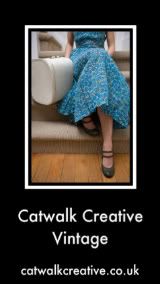
No comments:
Post a Comment